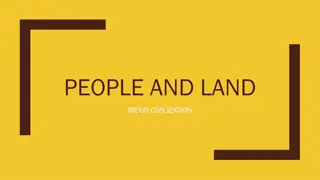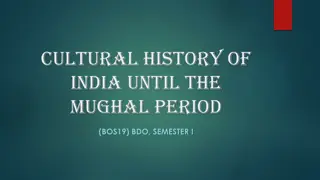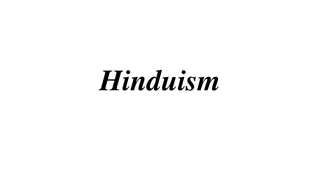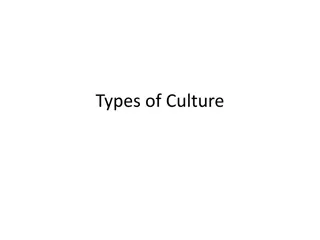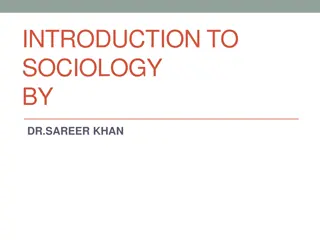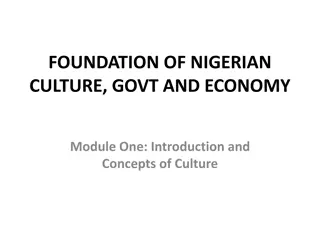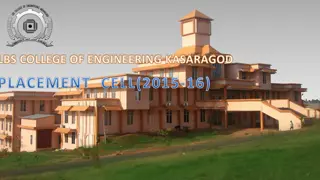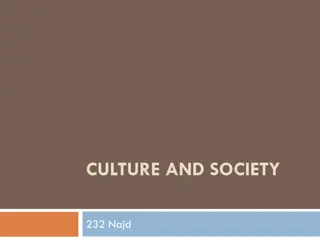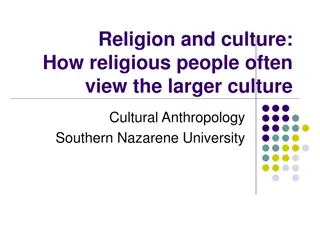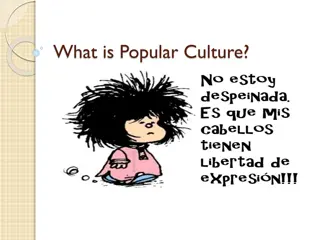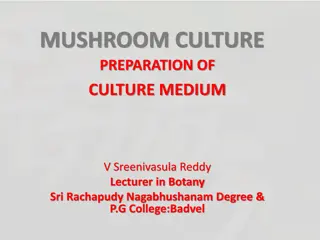Life and Culture of the Indus Valley Civilisation
The Indus Valley Civilisation, one of the oldest in the world, reveals insights into social life, food habits, clothing, jewelry, sports, and more of its people. The society was divided into classes, and they had advanced knowledge in various aspects like fashion and household articles. They enjoyed sports, hunting, music, and maintained birds and bulls. Their burial customs varied, with bodies being either buried or exposed.
Download Presentation

Please find below an Image/Link to download the presentation.
The content on the website is provided AS IS for your information and personal use only. It may not be sold, licensed, or shared on other websites without obtaining consent from the author. Download presentation by click this link. If you encounter any issues during the download, it is possible that the publisher has removed the file from their server.
E N D
Presentation Transcript
HISP 101 INDUS VALLEY CIVILISATION Ms Lallomjudi Darnei Department of History Haflong Govt. College, Haflong.
Introduction: The Indus Valley Civilisation is one of the oldest civilisations of the world. Excavations were carried by Daya Ram Sahni in 1921 at Harappa in Montgomery district of Punjab and in 1922 at Mohenjodaro in District Larkana of Sind by R.D.Banerjee. Further excavations were carried out at various other sites such as Chanhudaro, Suktagendor, Kot Diji, Banawali, Ropar, Kalibangan, Lothal etc. Indus Valley Civilisation is also known as Harappan Civilisation. The people of Indus Valley civilisation have left behind them no source in the shape of inscription or written record. So, the archaeological ruins and remains are the only source for the reconstruction of the history of a very advance civilisation.
Social life of the Indus People: The society during the Indus Civilisation was divided into four classes such as learned persons, warriors, businessman and working class people or labourers. Food Habits: The People of Indus Valley were both vegetarian and non-vegetarian. Vegetarian diet consisted of wheat, barley, dates and other fruits. Non-vegetarian diet consisted of fish, meat of animals and poultry items. Dresses and ornaments: They wear dresses made of cotton and woollen. They used two unsewn clothes to cover their body. One to cover upper torso and other to cover lower limbs. Both men and women were fashionable.
They wear various types of jewellery and ornaments made of gold, silver, copper, bronze and electrum ( a mixture of silver and gold). Common ornaments used by the people were necklace, fillets, armlets finger-rings, bangles, nose-studs, ear-rings etc ( nose-studs, ear-rings mostly used by women). People also knew the art of hair styling. Men kept various types of beards and whiskers. House hold articles: Indus people used house hold articles like cake moulds, dippers, beakers, bowels, basins, pans, saucers, sickles, saws, knives, chisels etc. Their house hold articles shows the advanced stage of the social life of the people of Indus Valley.
Sports and amusements: People took keen interest in sports and amusement. Dice playing was the most common pace time. People also took delight in hunting. Fishing was another source of amusement for the people. People also maintained birds, bull and arranged their fights for their amusement. Clay models were source of enjoyment for children. People also took delight in music and dancing. Arms and Weapons: Arms and weapons of Harappan people are made of copper, brass and stone as well. Axe, blades, dagger were the main weapons used by the people. The Harappan people were also conversant with the use of bow and arrow.
Disposal of dead bodies: Different methods for the disposal of dead bodies were in vogue during the Indus Valley Civilisation such as:- Firstly, dead bodies were buried under the ground. Secondly, dead bodies were exposed to the wild beast and birds. Thereafter , bones were collected and buried under the earth. Thirdly, dead bodies were burnt and its last remains collected and buried under earth in an urn.
Conclusion: The Indus Valley Civilisation left a deep impact on the future course of Indian civilisation and continued to influence the people of subsequent centuries. V.D.Childe has rightly observed, The Indus Civilisation represents a very perfect adjustment of human life to a specific environment that can only have resulted from years of patient effort. It forms the basis of modern Indian culture.


